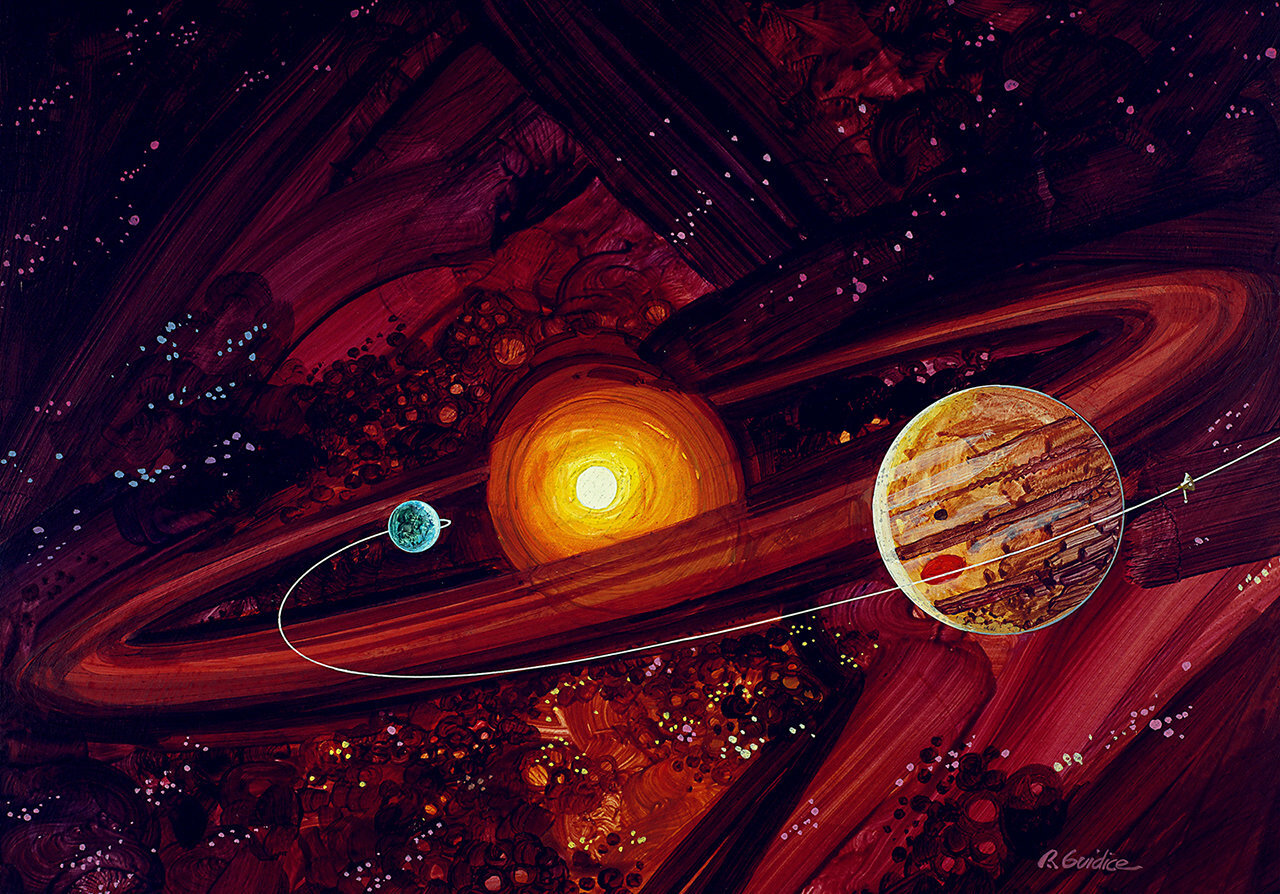Someone’s got to be first. In space, the first explorers beyond Mars were Pioneers 10 and 11, twin robots who charted the course to the cosmos. Here are 10 facts about the Pioneers.
1. Before Voyager
Voyager, with its outer solar system tour and interstellar observations, is often credited as the greatest robotic space mission. But the plucky Pioneers proved Voyager’s epic mission was possible.
2. Where No One Had Gone Before
Until Pioneer 10, scientists weren’t sure how hard it would be for a spacecraft to navigate the main asteroid belt, a doughnut-shaped area between Mars and Jupiter that measures some 175 million miles (280 million kilometers) wide and 50 million miles (80 million kilometers) thick. The material in the belt travels at speeds up to 45,000 mph (72,000 kilometers per hour) and ranges in size from dust particles to rock chunks as big as Alaska.
Launched on March 2, 1972, Pioneer 10 was the first spacecraft to pass through the asteroid belt, emerging from the first six-month crossing in February 1973. The spacecraft logged a few meteoroid hits (fewer than expected) and taught engineers new tricks for navigating farther and farther beyond Earth.
3. Trailblazer No. 2
Pioneer 11 was a backup spacecraft launched on April 5, 1973, after Pioneer 10 cleared the asteroid belt. The new mission provided a second close look at Jupiter, the first close-up views of Saturn, and also gave Voyager engineers plotting an epic multi-planet tour of the outer planets a chance to practice the art of interplanetary navigation.
4. First to Jupiter
It was 263 years after humankind first looked at Jupiter through a telescope that Pioneer 10 became the first human-made visitor to the Jovian system in December 1973. The spacecraft snapped about 300 photos during a flyby that brought it within 81,000 miles (about 130,000 kilometers) of the giant planet’s cloud tops.
5. Pioneer Family
Pioneer began as a Moon program in the 1950s and evolved into an increasingly more complicated spacecraft, including a Pioneer Venus mission that delivered a series of probes to explore deep into the mysterious toxic clouds of Venus.
6. A Pioneer and a Pioneer
Classic rock has Van Halen, we have Van Allen. With credits from Explorer 1 to Pioneer 11, James Van Allen was a rock star in the emerging world of planetary exploration. Van Allen (1914-2006) is credited with the first scientific discovery in outer space and was a fixture in the Pioneer program. Van Allen was a key part of the team from the early attempts to explore the Moon (he’s pictured here with Pioneer 4) to the more evolved science platforms aboard Pioneers 10 and 11.
7. The Farthest – For a While
For more than 25 years, Pioneer 10 was the most distant human-made object, breaking records by crossing the asteroid belt, the orbit of Jupiter, and eventually even the orbit of Pluto. Voyager 1, moving even faster, claimed the most distant title in February 1998 and still holds that crown.
8. Last Contact
We last heard from Pioneer 10 on Jan. 23, 2003. Engineers felt its power source was depleted and no further contact should be expected. We tried again in 2006 but had no luck. The last transmission from Pioneer 11 was received in September 1995. Both missions were planned to last about two years.
9. Galactic Ghost Ships
Pioneers 10 and 11 are two of five spacecraft with sufficient velocity to escape our solar system and travel into interstellar space. The other three – Voyagers 1 and 2 and New Horizons – are still actively talking to Earth. The twin Pioneers are now silent. Pioneer 10 is heading generally for the red star Aldebaran, which forms the eye of Taurus (The Bull). It will take Pioneer over 2 million years to reach it. Pioneer 11 is headed toward the constellation of Aquila (The Eagle) and will pass nearby in about 4 million years.
10. The Original Message to the Cosmos
Years before Voyager’s famed Golden Record, Pioneers 10 and 11 carried the original message from Earth to the cosmos. Like Voyager’s record, the Pioneer plaque was the brainchild of Carl Sagan who wanted any alien civilization who might encounter the craft to know who made it and how to contact them. The plaques give our location in the galaxy and depict a man and woman drawn in relation to the spacecraft.

